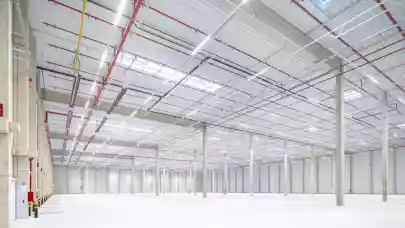
The Slovak construction market is the smallest among the member countries of the Euroconstruct area. Due to its size, it is significantly more affected by both favourable and unfavourable influences. Overall, the private sector contributes more to construction investment than the public sector. With one exception, civil engineering, where public investment is higher. In residential construction private investment exceeds public. This can be attributed to a widely neglected public rental housing programme in Slovakia, writes Radovan Kostelník from ÚEOS Komercia in his study for the independent organization Euroconstruct that unites research organisations from 19 EU countries.
The current situation leads to increasingly challenging forecasts for construction output in Slovakia. Price developments are influenced by a wide range of factors. Slovakia has the resources from the RRP at its disposal, but they will have to be reassessed and the real priorities set that can be achieved by the end of 2026. The construction industry in Slovakia is facing difficult times, so despite the increasing volume of investment in construction, construction output will be at a constant level (in constant prices).
Residential construction in Slovakia
The contribution of residential construction to the total volume of construction output is about 28 percent, according to official data from the National Statistical Office. However, DIY and black work predominate in this sector. For this reason, the development of sales of building materials does not correspond to the development of construction output. Construction output in residential construction grew until 2019 when it reached its last peak. Due to the pandemic construction output fell by 15 percent in 2021 compared to the period before the pandemic. The pandemic has led to a higher share of DIY and black work in the sector. Consolidation of household income also contributed to declining investment in construction.
Residential renovation in Slovakia’s Recovery and Resilience Plan
Slovakia’s Recovery and Resilience Plan (RRP) provides support for the renovation of 30,000 single-family homes by 2026. Renovation in this case means the reduction of the building's primary energy consumption. If savings of 30 to 60 percent are achieved, a subsidy of € 14,000 will be available; if savings of over 60 percent are achieved, a subsidy of € 19,000 will be granted. This funding measure is primarily concerned with the thermal insulation of the building envelope and the replacement of windows and doors.
The RRP was prepared and sent for approval in mid-2021. Investment in construction was calculated based on the price development of construction works and building materials up to the first quarter of 2021. From the second quarter of 2021 onwards, a significant price increase started in Slovakia, which is reflected not only in the prices of construction services and building materials but also in the prices of energy and fuels and consumer prices for goods and services. Currently, this development increased inflation, which is around 10 percent.
Based on developments at the time of preparation of the RRP, no sharp increase in construction prices was expected. Based on the development and in compliance with the value of subsidies, the volume of construction output will be lower than forecasted. In addition, with the rapid rise of prices, the availability of renovation of the entire family house for a larger group of citizens is decreasing. Prices of doors, windows and thermal insulation materials increased by 15 percent within one year. In 2022, a slowdown in construction material prices is not expected. Applicants should receive the first subsidies at the beginning of 2023. It is questionable whether the amount of the subsidy will be increased or the number of family houses that will be supported by the subsidy will be reduced.
The impact of the war
In addition, to the prices of construction works and materials, their availability decreased. There is a significant shortage of skilled as well as unskilled workers in the market. Also, the lack of construction materials prolongs waiting times. Slovakia is dependent on supplies of raw materials from Eastern Europe, mainly from Russia and Ukraine. The new conflict in Ukraine and the associated sanctions against Russia are significantly increasing input prices. Deliveries of raw materials from other countries extend delivery deadlines, as not only Slovakia is affected by this raw material crisis. In the recovery plan, €2.7 billion was set aside for construction. An additional €650 million has been allocated to civil engineering. Funding from the RRP cannot be increased, so it will be necessary to reassess the areas considered in preparing the plan.
Public procurements
From the public sector's point of view, the situation with rising prices in the construction industry is even more alarming. Most public procurement is subject to the Public Procurement Act. The process from the announcement of the competition to the signing of the contract takes three to six months, depending on the scope of the contract and objections to the public procurement. Sometimes this process takes more than a year.
Slovakia still does not have a connected east to west with a continuous section of highway. From Košice to Bratislava it is possible to get by the highway through Hungary. Construction works on the connection between Košice and Bratislava continue. Currently, there are missing 3 sections:
- Lietavská Lúčka – Dubná Skala, length 13.51 km, start of construction work 2014Q2
- Hubová – Ivachnová, length 14.92 km, the start of construction work 2013Q4
- Turany – Hubová, length 13.5 km, the start of construction work is unknown
At present, construction contractors have requirements to increase the value of the contract, due to rising prices in the construction industry. Contracts shall be subject to conditions which have been agreed upon based on a public tender. Financial coverage of contracts is from the state budget or EU funds. By law, the works have to be made for value, according to the winning bid. The law also includes the possibility of increasing the price of the work if is strictly necessary where for reasons of extreme urgency brought about by events unforeseeable by the contracting authority and the change does not change the nature of the contract. However, for construction works, the price of the work may not be increased by more than 50 percent. With the current price growth, it is questionable whether an increase of 50 percent for works with a longer schedule will be sufficient. On the other hand, it is necessary to prove to the Public Procurement Office, that these are unforeseeable facts.
At the beginning of the pandemic, the EU issued a regulation setting out the procedure for public procurement during an emergency. In the case of proving the legitimacy of cost increases that were not foreseeable at the time of publication of the tender, a regulation must be prepared in cooperation with the Ministry of Transport and Construction of the Slovak Republic, taking into account all effects on the final price increase. It is necessary to involve the widest possible group of experts, construction companies and sellers of construction materials to process the creation of the regulation to achieve a realistic view of price increases. This regulation would also serve as an argument to increase the prices of contracts drawn from the state budget and EU funds.



